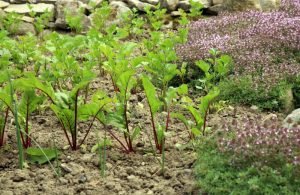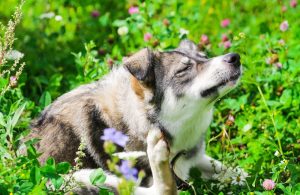A money tree brings beauty and life to any space. These plants adapt well to indoor conditions. They thrive with minimal fuss. Caring for your plant can become a peaceful daily ritual. Following simple steps helps keep your greenery healthy and vibrant.
A Comprehensive Gardening Guide to Cultivating a Money Tree
Contents
This guide walks you through every step of growing a healthy Money Tree. You’ll learn how to choose, plant, and care for yours.
Selecting the Right Money Tree Variety
When choosing a variety look at leaf shape and growth habits. Pachira aquatica is common. It has braided trunks and glossy leaves. Other types include Pachira glabra. They vary in leaf size and stem thickness. Pick a sturdy cultivar that suits your space. Check plant labels for mature size. Aim for a young, healthy specimen with vibrant foliage and no signs of stress.
Ideal Soil Mix and Potting Medium
A rich, well draining mix helps roots thrive. Use equal parts peat moss, perlite, and quality potting soil. The peat retains moisture. The perlite boosts airflow. Avoid heavy garden dirt. It can lead to waterlogging.
Add compost for nutrients. Aim for a mix that stays moist but never soggy. Test drainage by watering and watching how fast water passes through. This medium lets air reach roots.
Choosing the Perfect Container and Drainage
You’re best off picking a pot with drainage holes. Terracotta pots work well. They wick moisture and prevent rot. Choose a size slightly larger than the root ball. Too big containers can hold excess water. Place a layer of gravel or small stones at the bottom. This prevents soil from blocking holes. Ensure you can lift the pot easily when it needs moving. Add a saucer for excess drips.

Light and Placement Requirements
You’re going to want bright, indirect light for your money tree. Place yours near a window with morning sun. Avoid harsh afternoon rays. They can scorch leaves. Rotate your plant every few weeks. This ensures even growth. Low light slows growth and can cause leggy stems. If natural light is limited, use a grow light for six to eight hours daily. Monitor leaf color to gauge light levels.
Watering Frequency and Techniques
Water your money tree when the top inch of soil feels dry. Insert your finger to test moisture. Water deeply until it drains out the bottom. Empty the saucer after fifteen minutes. This prevents root rot. Avoid daily watering. It leads to overwatering. Adjust frequency in winter when growth slows. Always use room temperature water. Cold water can shock the roots.
Temperature and Humidity Control
Maintain daytime temperatures between sixty-five and seventy-five Fahrenheit. Nighttime lows should not drop below sixty degrees. Avoid placing the plant near heat vents or drafty windows.
Money trees enjoy higher humidity. Use a humidifier or a pebble tray with water to boost moisture. Grouping plants can also raise humidity. Misting leaves helps in dry climates. Monitor humidity levels with a hygrometer for best results.
Fertilization Schedule and Recommended Products
Feed your money tree during the growing season, from spring through summer. Use a balanced, water-soluble fertilizer at half strength. Apply every four to six weeks. Avoid fertilizing in fall and winter.
You can choose organic options like fish emulsion or seaweed extract. These boost nutrients naturally. Always follow label directions. Flush the soil with plain water after fertilizing to prevent salt buildup. This keeps roots healthy.
Pruning for Shape and Health
Prune your money tree in early spring. Remove dead or damaged leaves and stems. Cut branches at a slight angle above a leaf node. This encourages new growth. Trim back any leggy stems to maintain a full shape.
Use sharp, clean pruners to avoid disease. Wipe blades with rubbing alcohol before and after use. Pruning also improves airflow through the canopy. It prevents pest issues.
Repotting Best Practices
Repot your money tree every two to three years or when roots crowd the pot. Choose a container one size larger. Refresh two thirds of the old soil with a fresh mix. Gently tease roots to encourage spreading. Avoid burying the trunk too deep. Keep the root flare visible. Water lightly for the first week after repotting. Monitor the plant for transplant shock.
Winter Care and Dormancy Management
During winter, reduce watering frequency significantly. Let the soil dry out more between waterings. Keep your money tree in bright light, even though growth slows. Avoid feeding until spring returns. Maintain indoor temperatures above sixty degrees. Avoid sudden temperature drops. Increase humidity with a pebble tray or humidifier. Check for pests regularly, since dry indoor air can attract spider mites. Rotate the plant to ensure balanced growth.
Benefits of Growing a Money Tree at Home
Growing a money tree at home adds charm and life to your space. It offers more than decorative value by boosting air quality and well-being.
Natural Air Purification
Money trees filter toxins like benzene and formaldehyde. They draw impurities from the air and release fresh oxygen. Improved air quality reduces dust buildup. You might breathe easier and sleep better. A money tree in your living area doubles as a natural air purifier and a living design element.
Boosts Indoor Humidity
Money trees release moisture through leaves via transpiration. This natural process raises humidity levels in the surrounding air. You’ll feel less dryness on your skin and in your sinuses. It also helps protect wooden furniture from cracking. Improved humidity makes your indoor climate more comfortable during dry seasons.

Easy Maintenance
Money trees need minimal care to stay healthy. Water the topsoil when it feels dry, usually about once a week. They thrive in bright, indirect light. Monthly light pruning keeps their shape neat. A balanced fertilizer in spring and summer gives a gentle boost. This fuss-free routine fits easily into busy schedules.
Aesthetic Appeal and Décor Flexibility
Money trees boast a distinctive braided trunk and lush leaves. They make a striking focal point in any room. Pots come in diverse styles to suit your décor. You can match them with modern, rustic, or minimalist interiors. Their sculptural form adds visual interest and blends seamlessly with other greenery.
Stress Reduction and Relaxation
Caring for plants can lower stress hormones in your body. Money trees encourage mindfulness through simple watering and pruning tasks. Watching new leaves emerge brings a sense of calm and accomplishment. Their presence indoors creates a soothing backdrop for busy days. You’ll notice improved mood and reduced anxiety.
Symbol of Prosperity and Good Luck
In feng shui, money trees symbolize wealth and positive energy. They are thought to attract abundance into homes and offices. Placing one in a strategic spot may enhance financial luck. The braided trunk is said to lock in good fortune. This cultural tradition adds depth to your décor.
Improved Focus and Productivity
Greenery has been linked to better concentration and mental clarity. A money tree on your desk can boost motivation during work or study. It reduces mental fatigue and refreshes your mind. The subtle rustling of leaves offers a calming background. You’ll find tasks feel less tedious and more engaging.
Versatile Propagation and Gift Potential
Propagating money trees from stem cuttings is straightforward and rewarding. You can grow multiple plants without extra cost. Gifting a baby tree shows thoughtfulness and care. It’s a unique present for housewarmings or special occasions. Each new plant deepens your connection to this creative hobby.
Common Pests and Disease Management
Money trees can encounter pests and diseases that undermine health and growth. Early detection and targeted treatment keep your plant thriving.
Spider Mites
Spider mites thrive in drought conditions and weave fine webs on leaves. Their feeding causes tiny yellow spots and leaf drop. Increase humidity around your plant by misting daily or placing a pebble tray beneath the pot. Wipe leaves gently with a damp cloth to remove webbing. If infestation persists, apply insecticidal soap or neem oil every week until you see clear leaves.
Mealybugs
Mealybugs appear as small, white, cotton-like clusters on stems. They suck sap and cause leaf wilting and yellowing. Use a cotton swab soaked in rubbing alcohol to dab each bug. Repeat treatment weekly until no pests remain. A periodic spray with horticultural oil can help suffocate any hidden eggs. Check new growth regularly, since mealybugs multiply quickly.
Scale Insects
Scale insects attach themselves to stems and the undersides of leaves as brown or tan bumps. They extract plant juices and secrete sticky honeydew that encourages sooty mold. Gently scrub them off with a soft brush or cloth.
For stubborn scale, spray with a systemic insecticide following label directions. Prune away heavily infested branches to control spread. Inspect your plant monthly to catch new scale early.
Aphids
Aphids gather on tender new shoots and buds. They feed on sap and cause leaf curling and distortion. Blast them off using a strong water spray. Apply insecticidal soap to smother remaining insects, focusing on undersides of leaves. Introducing ladybugs indoors can help long-term control. Remove any sticky residue after treatment to prevent mold growth.
Root Rot
Overwatering can lead to root rot, a fungal condition that causes dark, mushy roots. Affected leaves will yellow and wilt despite moist soil. Remove the plant from its container and trim off all blackened roots. Repot using fresh, well-draining soil mix. Cut back watering by allowing the top soil to dry more deeply between waterings. Ensure your pot has adequate drainage holes.
Leaf Spot
Leaf spot shows up as brown or black circular spots with pale edges. High moisture and poor air movement fuel its spread. Prune off affected leaves and dispose of them in the trash. Improve airflow around your money tree by spacing it away from other plants. Water at the soil level only to avoid wetting foliage. If leaf spot recurs, treat with a copper-based fungicide.

Powdery Mildew
Powdery mildew looks like fine white dust coating leaves and stems. It thrives when humidity is high but temperatures are moderate. Increase ventilation around your plant and remove any heavily affected leaves.
Wipe remaining mildew with a cloth dipped in a water and baking soda solution. Use a sulfur-based fungicide if the problem persists. Lower the humidity slightly to prevent recurrence.
Bacterial Blight
Bacterial blight causes dark, water-soaked lesions on leaves and stems. It spreads rapidly in warm, wet conditions. Remove infected tissue immediately and dispose of it safely.
Avoid overhead watering to keep foliage dry. Increase air circulation around your plant by pruning overcrowded branches. A copper-based bactericide can help manage severe outbreaks but always follow label instructions carefully.
Conclusion
Growing a money tree adds a lush, vibrant accent to your home. It thrives when you provide bright, indirect light and well-draining soil. Regular watering, proper feeding, and occasional pruning will keep it healthy and full. With minimal effort, you’re rewarded with a resilient plant that boosts air quality and uplifts your space.






